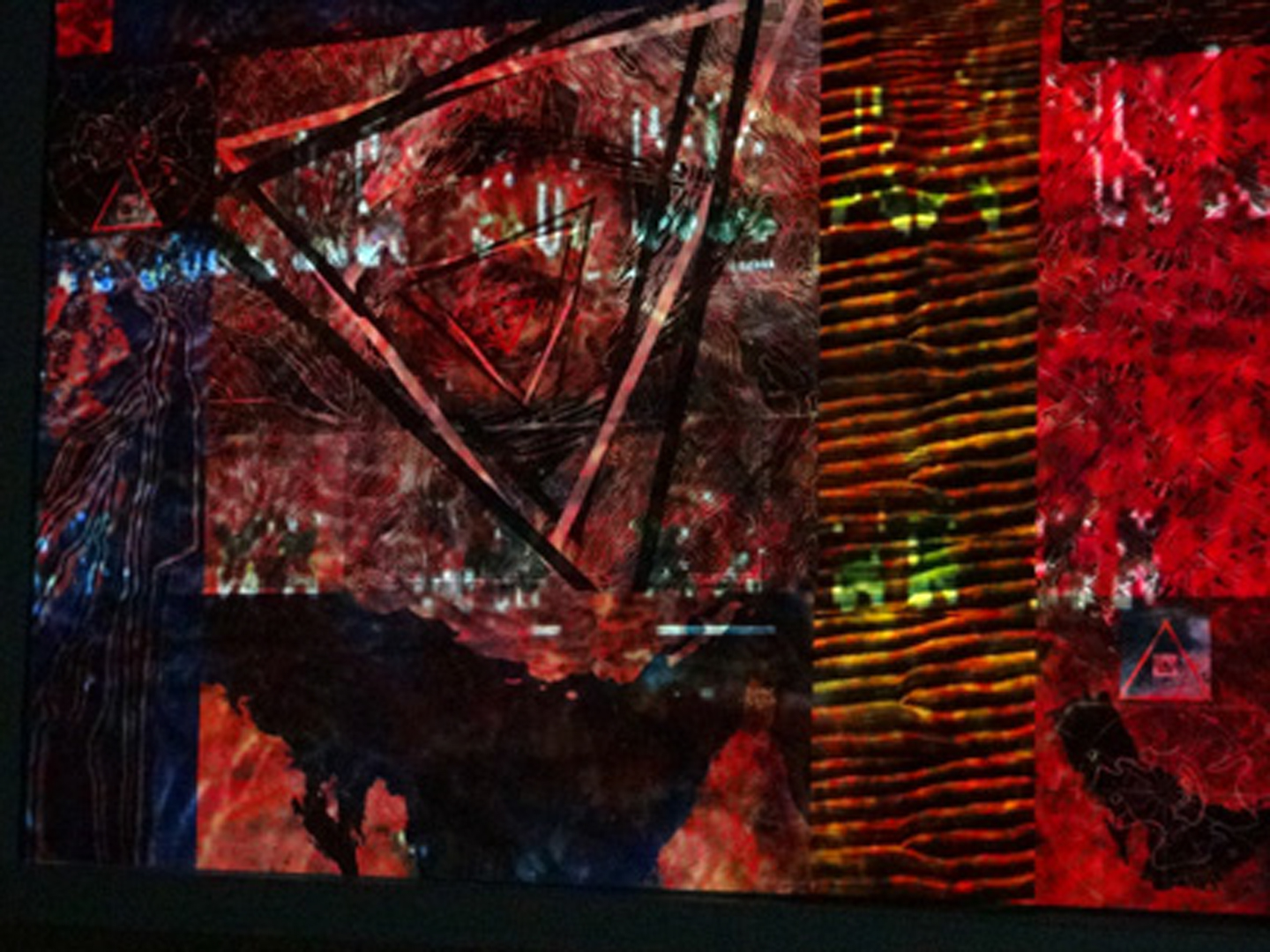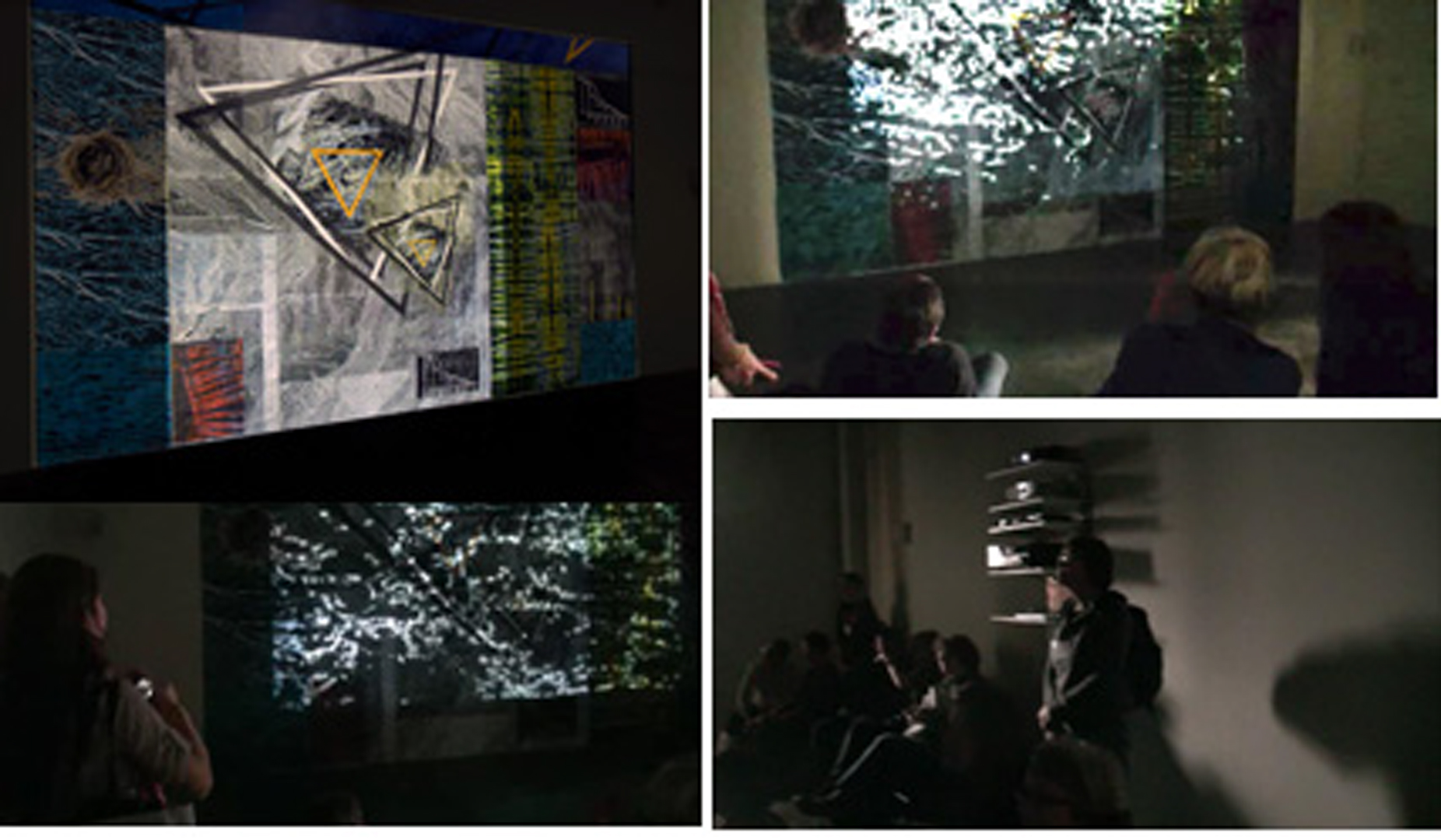“Dys/onance and Dys/ruption: Collaboration in video, print and sound” presented by Cornell and Cornell
Symposium:
Presentation Title:
- Dys/onance and Dys/ruption: Collaboration in video, print and sound
Presenter(s):
Abstract:
The video-and-sound works of Deborah Cornell, visual artist and Richard Cornell, composer, center on environmental themes relating regional and global arenas, crossing disciplines by using immersive-yet-invasive techniques. This talk will describe previous works, and building into a large-scale work-in-progress – Dys/sonance & Dys/ruption , an installation foregrounding human presence as a catalyst of disruption in natural systems – through interactive transformations in the work. The methods we use also involve a form of visual disruption – printed wall murals, with two-channel video projections that perceptually transform what is before the viewer, confusing what is actual with what is changing, even as the participants make interjections that affect elements in the work.
This new interactive project thus involves active disruption – and also metaphorically relates to the problem of “glitch” in its largest sense. Small environmental miscalculations have built into climate change and its intense repercussions, resulting from direct and indirect human activity that interferes with the sustaining order that supports human existence. Spinoffs from this glitch include sinking cities, wet deserts that corrode formerly desiccated structures, acidification of oceans. Adaptable and optimistic, humans fully intend to accommodate and adjust to this glitch as best they can – but at some point the consequences may turn unsustainable – which would become a much more extreme glitch than the simple beginnings of climate inversion now evident. Through interactive electronics, our newest work seeks to create both a sense of personal responsibility and a sense of direct agency affecting the simulated “world” we present.
Our new work utilizes projected two-channel video onto a large printed mural, electronic sound, and interactive processing to create a variable work that can be either disrupted or re-formed by visitors’ input (= human voice). Real time computation of one of the video projections simulates the flocking behavior of birds in migration. Using a microphone, ambient sound is analyzed for peak frequency. When peak frequency is in the characteristic range of human speech, its amplitude affects the transparency/color of the images and they fade. When amplitude drops below threshold level the images gradually re-emerge. The interactivity is not overt but builds from effects that are subtle and surprising. The conversation of the humans present in the space creates random effects within the work that reflects the altering course generated by human interference with the environment.
Video:
-
Quiet Skies excerpt from Richard Cornell on Vimeo.






